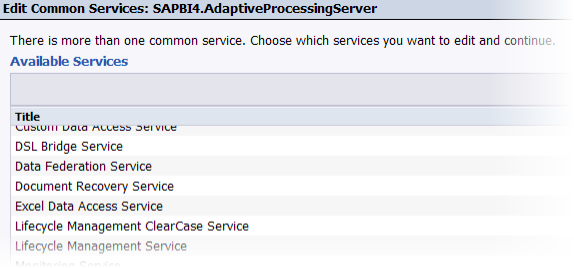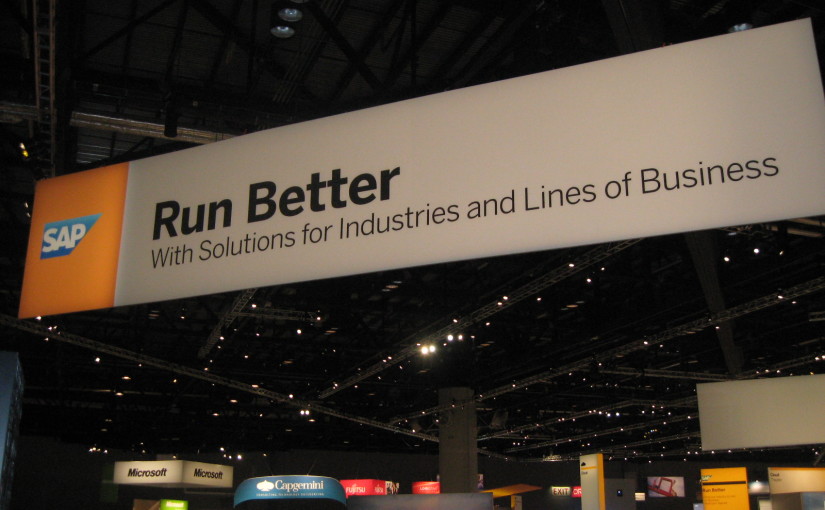UPDATE: Working with SAP BusinessObjects Business Intelligence 4.1? You’ll want to read this article instead.
I still remember taking the server administration courses for BusinessObjects Enterprise XI R1 at a 2005 fast-track session for BusinessObjects partners in Atlanta, Georgia. The coursework focused on memorizing the boxes on the architecture diagram, remembering the difference between the Crystal Reports Cache Server and Crystal Reports Processing Server (which was then called the Page Server), and knowing how many of each server type was required. Fortunately, my instructor, Greg Gianuzzi, prepared me well and I passed each of the three certification exams on the first attempt.
Fast forward to 2011, where I am furiously reading documentation and fumbling through my SAP BusinessObjects Business Intelligence 4.0 virtual server. So much is unchanged in BI 4.0, but so much is new. Take, for example, the Adaptive Job Server and Adaptive Processing Server. Both of these made their debut with SAP BusinessObjects Enterprise XI 3.0. I affectionately call them the “junk drawer” servers, as they contain multiple unrelated services. Previously separate services like Search and the Web Intelligence Job Server were assimilated in XI 3.0 and the trend has escalated with BI 4.0. Previously distinct servers like the LifeCycle Management and Multi-dimentional Analysis (MDAS) servers are now integrated into these two servers.
My first thought was “won’t that be confusing?” followed by “how will we size each of the services?”. Well, today (while looking for something completely unrelated) I stumbled upon the following nugget from page 60 of the Business Intelligence Platform Installation Guide for SAP BusinessObjects Business Intelligence platform 4.0 SP2 (click here to download, S-ID required). The emphasis is mine.
5.3 Creating additional Adaptive Processing Servers
The installation program installs one Adaptive Processing Server (APS) per host system. Depending on the features that you’ve installed, this APS may host a large number of services, such as the Monitoring Service, Lifecycle Management Service, Multi-Dimensional Analysis Service (MDAS), Publishing Service, and others.
If you are installing a production environment, do not use the default APS. Instead, it is highly recommended that once the installation process is complete, you perform a system sizing to determine:
• The type and number of APS services.
• The distribution of services across multiple APS servers.
• The optimal number of APS servers. Multiple APS servers provide redundancy, better performance, and higher reliability.
• The distribution of APS servers across multiple nodes.Create new APS server instances as determined by the sizing process.
For example, if the outcome of your sizing happens to suggest the creation of one APS for each service category, then may end up creating eight APS servers. One for each service category: Advanced Analysis Services, Connectivity Services, Core Services, Crystal Reports Services, Dashboard Design Services, Data Federation Services, Lifecycle Management Services, and Interactive Analysis Services.
Personally, I would have favored the installation program creating the eight APS servers for neatness and clarity, even though there is some obvious overhead for smaller deployments. But it is what it is. I hope to receive my SAP BusinessObjects Business Intelligence 4.0 instructor manuals later this month to see how sizing topics such as this one are is addressed by the new curriculum.
There are sizing resources for SAP BusinessObjects Business Intelligence 4.0 on the SAP Service Marketplace. For instructions on how to locate them, read the related post
Where Can I Find the Sizing Companion for SAP BusinessObjects Business Intelligence 4.0? In particular, you’ll want to download the Sizing Companion for SAP BusinessObjects BI 4.0, which contains gems like:
For small deployments (running a dozen or less users) like development systems, small demo systems or sandbox systems where performance isn’t critical, you can run multiple types of services in a single APS.
For medium to large deployments, it is a general recommendation that an APS instance host only one service for those services which are critical to performance and that you will need to scale out as capacity is added. For example, you would not have one APS instance hosting the CVOM [Visualization] and DSL Session Service – you would have at least one for each. The memory requirements of the some of the services hosted by the APS can be quite large. By separating services across APS instances (and nodes), you gain better manageability for memory and scalability considerations.
In summary, one Adaptive Processing Server from the default BI 4.0 installation will work in a sandbox or development environment, but probably not for a QA/UAT environment. And definitely not for a production environment, unless you’re an Edge BI 4.0 customer.



I am so with you regarding why in the worl the install program does not create separate APS automatically. Really cumbersome and harder to administer, just increasing the TCO.
Perhaps they’re just short on time to get BI 4.0 out the door and we’ll see a little more finesse in the BI 4.1 installation script.
Hi Dallas,
My company has Edge, however I can have up to 40 concurrent users at one time. Performance is not great, but I am not sure whether it is BO itself or the load. Would you suggest to break down the APS? If, so any basic configuration?
SAP recently posted APS white paper. Look on SCN site.